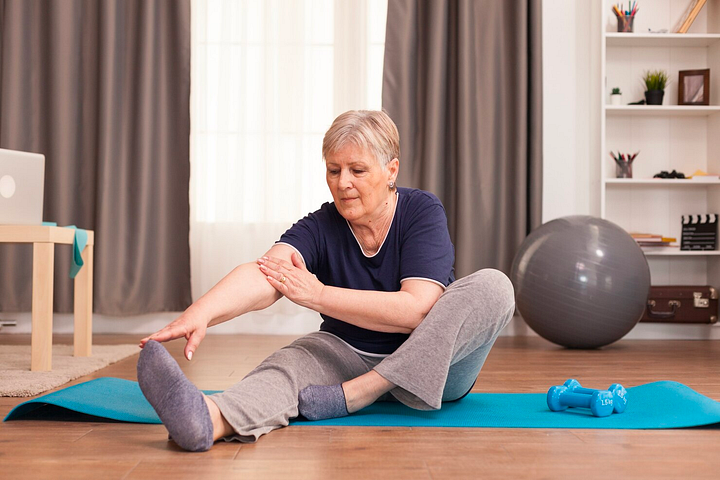Osteoarthritis, a prevalent form of arthritis, wreaks havoc on the joints, causing deterioration and damage that can significantly impact one’s quality of life.
Here are some common questions regarding osteoarthritis:
- “How can I ease the pain of osteoarthritis?”
- “Can you stop osteoarthritis from progressing?”
- “What are the best treatments for osteoarthritis?”
- “What are the 4 stages of osteoarthritis?”
- “What worsens osteoarthritis pain?”
In this blog post, we’ll explore six effective ways to rehabilitate and minimize osteoarthritis and joint pain.

Understanding the Dynamics of Osteoarthritis
Osteoarthritis primarily involves the breakdown and deterioration of joints.
It often occurs in weight-bearing areas, such as the spine, knees, wrists, and hands.
This degradation can be likened to the thinning out of protective joint pads, leading to nerve compression and the subsequent pain and discomfort associated with the condition.

1. Addressing Spinal Osteoarthritis with Chiropractic Care
When dealing with spinal osteoarthritis, I highly recommend seeking chiropractic care.
This involves getting a pre-treatment x-ray to pinpoint areas of degeneration and misalignments that can contribute to the development of osteoarthritis.
The chiropractor can then address these specific areas.
By identifying and correcting these issues, chiropractic care aims to alleviate pain and improve joint function.

2. Weight Management as a Crucial Factor
Weight plays a pivotal role in osteoarthritis, particularly in the lower extremities.
A study conducted by the Mayo Clinic highlighted the significant impact of weight gain on joints.
It found that every pound gained translated to four pounds of pressure on the knees, ankles, and feet.
Therefore, maintaining a healthy weight is crucial in managing and preventing osteoarthritis in weight-bearing joints.
3. Considering Pelvic Misalignment
Uneven wear on joints may indicate pelvic misalignment, which can exacerbate osteoarthritis.
Analyzing the hips through proper x-ray examination helps identify any tilt or misalignment that could contribute to joint imbalance.
Addressing pelvic misalignment is essential in preventing uneven wear on joints, minimizing the risk of accelerated deterioration in one joint over another.
4. Holistic Rehabilitation Approach
Taking a holistic approach to osteoarthritis involves looking beyond the affected joint and considering the entire chain of command from the brain on down.
Rehabilitating the tendons and muscles associated with specific joints is key to improving joint health and reducing stiffness.
Whether the issue lies in the spine, shoulders, elbows, wrists, or knees, a comprehensive rehabilitation strategy can optimize blood flow, promoting joint movement and minimizing discomfort.

5. Nutritional Strategies for Osteoarthritis
Nutrition plays a vital role in managing osteoarthritis, and adopting an anti-inflammatory diet is crucial.
Inflammation is often associated with arthritis, and certain foods can either worsen or alleviate this inflammation.
Emphasizing a diet that reduces inflammatory foods and carbohydrates can significantly contribute to managing osteoarthritis symptoms.
6. Omega-3 and Turmeric Supplementation
Additionally, supplementing with omega-3 and turmeric, two potent anti-inflammatories, can further support joint health.
A study found that taking 1500 milligrams of high-quality omega-3 provides a pain-relieving effect comparable to NSAIDs (nonsteroidal anti-inflammatory drugs) like aspirin and ibuprofen.
Combining omega-3 with turmeric, which is known for its anti-inflammatory properties, in a single supplement offers a convenient and effective way to help promote a normal inflammatory response in the body without the side effects associated with NSAIDs.
Conclusion
In conclusion, managing osteoarthritis requires a multi-faceted approach that addresses the root causes and incorporates both lifestyle and nutritional strategies.
From seeking chiropractic care for spinal issues to maintaining a healthy weight and addressing pelvic misalignment, each aspect plays a crucial role in minimizing joint pain and promoting overall joint health.
Additionally, adopting an anti-inflammatory diet and incorporating omega-3 and turmeric supplements can further enhance the effectiveness of these strategies.
By embracing a comprehensive approach, individuals can take proactive steps towards managing osteoarthritis and improving their overall well-being.













